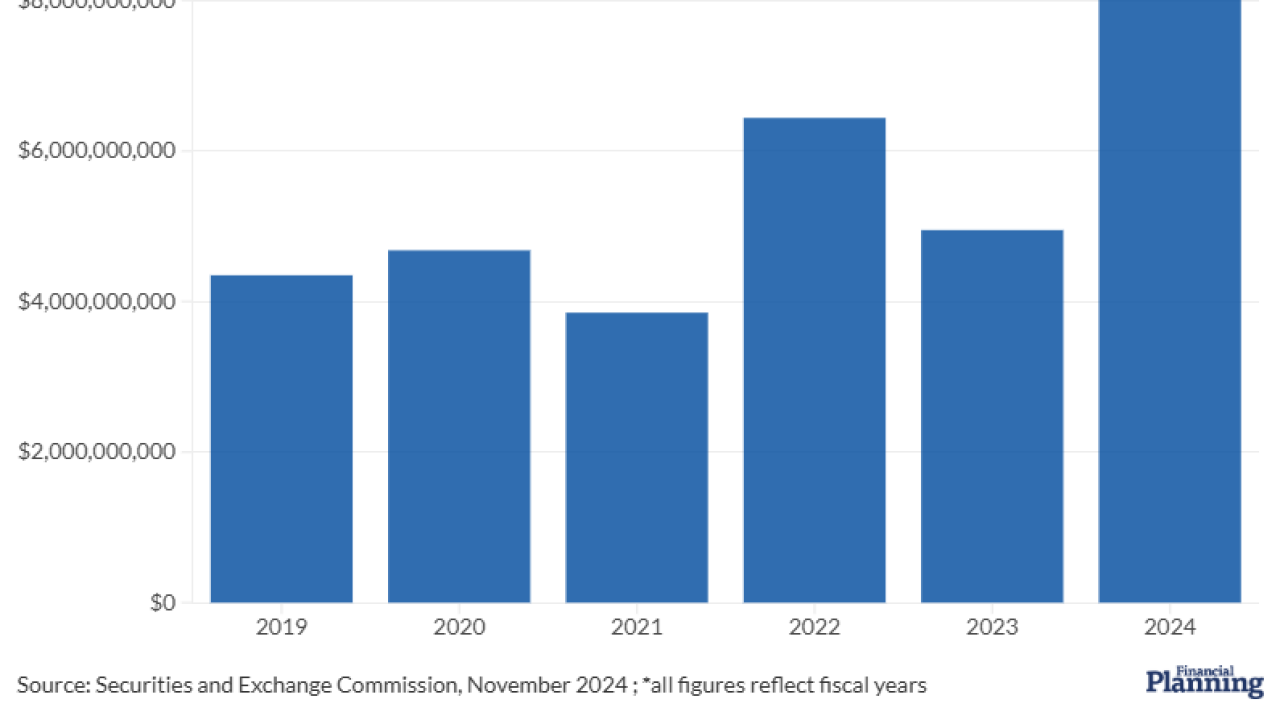For decades, the formula for a secure retirement was simple: save more. But new research from Goldman Sachs finds that for many younger workers, that approach is slipping out of reach.
With rising costs eroding the ability to contribute extra, advisors are turning to more strategic tools to help clients build retirement wealth.
The research, which surveyed 5,102 people in July, found that 42% of younger workers — spanning
"The cost of major life events is taking up a larger percentage of household income, a trend that affects workers at the lowest level of income as well as the highest," Greg Wilson, head of retirement at Goldman Sachs, said in a release. "The 'save more' strategy may be sufficient for some, but we believe many others will need to more thoughtfully use investment, advice and retirement income strategies to close their savings gap. Otherwise, retirement may increasingly become unaffordable for too many workers."
Rather than just saving more, Goldman Sachs highlights six strategies that could help close the retirement savings gap.
Early savings accounts promise to boost retirement
The passage of the One Big Beautiful Bill Act saw the creation of a new kind of early savings vehicle in the form of so-called
Trump accounts function similarly to IRAs but have unique rules. Parents can open one for children under 18, though these accounts aren't eligible for the $1,000 seed money. Although these accounts allow annual contributions of up to $5,000, Goldman Sachs researchers modeled them with $500 contributed each year from ages 1 to 20.
By age 21, this approach yields an initial balance of roughly $21,000. If the funds are held through retirement, the power of compounding (at around 6.5% annually) can grow that amount to about $340,000 by age 65, around 14% more than a comparable saver who starts at 21 without the early contributions.
Still, for workers who lack the additional funds to contribute to retirement savings, researchers say such savings accounts might not be the best fit.
Breaking down the 401(k) doors
Currently, about 25% of working Americans lack access to an employer-sponsored retirement plan. Experts say that expanding plan access remains a key strategy for boosting retirement outcomes across the workforce.
Lawmakers have put forth legislation to address that gap. The
These tax-advantaged retirement accounts, modeled after the federal Thrift Savings Plan, would target workers who don't currently have access to workplace retirement plans.
Goldman Sachs' survey found that respondents with access to a 401(k) felt more on track with their savings and confident about meeting their retirement goals, compared with those without plan access. Savers with access to a plan also had a 29% higher savings-to-income ratio, illustrating the impact of such accounts across income levels.
Greater returns with a PE-infused glide path
In August, President Donald Trump signed an executive order directing regulators to clear the path for 401(k) plans to include private market investments and cryptocurrencies. Not all advisors are on board with the
Plan sponsors say that
On average, this strategy boosted annual net returns by about 49 basis points, amounting to a 14% greater savings by retirement compared to a saver who lacked alts exposure, researchers found.
"Stronger portfolio performance can make existing savings work harder — helping compound balances faster without relying solely on higher contribution rates," researchers wrote. "By elevating expected returns within prudent risk bounds, investors may reduce the pressure to save more each year to reach on-track targets, creating more flexibility for households facing competing financial priorities."
Personalized financial advice is key
Savers often forgo professional financial planning because they don't believe they have enough income to work with an advisor, but Goldman Sachs' survey found that
That gap is even greater among retirees, where researchers saw a 27% higher savings-to-income ratio among those with a personalized plan.
The benefits aren't only material, they're also emotional. Respondents with a personalized plan say they feel able to reach retirement at more than twice the rate of those without a plan.
Does an annuity blend make sense for cash-strapped savers?
Annuities are often seen as a dirty word among many financial advisors, but analysis shows that they could play a vital role for workers who lack the savings to retire on an investment portfolio alone.
To assess their impact, researchers compared two retirement income strategies: a traditional portfolio-only approach following the 4% withdrawal rule, and a
Using a 30-year Monte Carlo simulation to account for market swings and lifespan variability, the blended approach maintained the same target income while, on average, preserving about 8% more wealth and producing more consistent outcomes.
Financial grit makes all the difference
Across different financial situations, the level of "financial grit" exhibited by a saver was the biggest differentiator in total savings at retirement, according to the study.
"So financial grit is something that we've been really leaning into for the last several years because, you know, as they say, 'Wherever you go, there you are.' You know, as retirement savers, we are at the center of what's going on," said Chris Ceder, a senior retirement strategist at Goldman Sachs, during a webinar. "So, we want to make sure that we understand beyond the math what happens to the individuals. Are they able to save and prepare?"
In the survey, researchers asked a series of questions to quantify financial grit, assessing perseverance, long-term orientation, attention to savings growth,
Even after controlling for income, respondents with high financial grit were found to have 49% higher savings-to-income ratios than those with low financial grit. For advisors working with clients, that finding has significant implications for how they work with clients beyond the plan itself.
"People are at the center of the retirement planning process," Ceder said. "And you can see that the behaviors that they exhibit really impact the outcome."










